#lapérouse
Explore tagged Tumblr posts
Photo
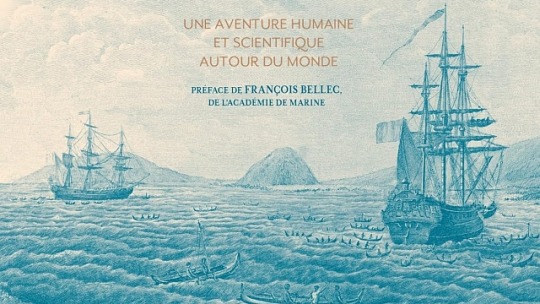
OUVRAGE | L'expédition Lapérouse, par Bernard Jimenez ➽ https://bit.ly/Ouvrage-Expedition-Laperouse Dans le sillage d'une des plus illustres expéditions maritimes : revivez cette exceptionnelle aventure humaine et scientifique du départ du port de Brest jusqu'au tragique naufrage à Vanikoro au milieu de l'océan Pacifique Sud
4 notes
·
View notes
Text
Sur les traces de La Pérouse...
Quels sont les vestiges de l'expédition de La Pérouse et où les voir?
Je vous propose une liste de liens utiles puis un petit texte retraçant l'historique des recherches liées aux épaves de l'Astrolabe et de la Boussole.
Le plus complet : https://www.collection-laperouse.fr/, catalogue les objets retrouvés dans des catégories claires, avec des photos en haute définition et des légendes.
Musée maritime de Nouvelle-Calédonie : les collections de ce musée - plus de 9000 références aujourd'hui recensées - se sont enrichies au fur et à mesure des campagnes de fouilles des associations Fortunes de mer calédoniennes et Salomon. Environ 50% des collections gérées par le musée provient des épaves la Boussole et l'Astrolabe. Pas de collection numérisée. https://museemaritime.nc/musee/collections
Musée Lapérouse : après avoir été géré par l'Association Lapérouse Albi France de 2004 à 2017, le musée est aujourd'hui municipal. Pas de collection numérisée. https://www.mairie-albi.fr/fr/le-musee-laperouse
Musée national de la Marine : quelques objets avec de très bonnes photos et explications https://www.musee-marine.fr/nos-musees/brest/collections/oeuvres-phares/ecusson-de-fregate-de-lexpedition-laperouse.html

Poulies en bois à leur sortie de l'épave de la Boussole, site de la Faille. Collection Drassm, droits: Teddy Seguin
La découverte du lieu du naufrage ne reviendra pas aux Français, mais à un bourlingueur irlandais, un géant téméraire né en 1788 à la Martinique : Peter Dillon. Il s’est déjà rendu à Tikopia, autre île de l’archipel des Santa Cruz aux îles Salomon, pour y déposer des amis, treize ans auparavant, mais n’a pas interrogé les insulaires sur le naufrage des navires français. Il savait pourtant que la France avait promis de récompenser toute personne ayant pu recueillir des informations sur le sort des frégates et des marins. À son deuxième passage à Tikopia, en 1826, il glane des informations qui lui permettent d’organiser une nouvelle expédition, à Vanikoro cette fois, d’où il rapporte en France des preuves incontestables. Il y sera fait chevalier de la Légion d’honneur, percevra une prime de 10 000 francs ainsi qu’une pension de 4 000 francs.
Marin et érudit, passionné par les grandes expéditions, Jules-Sébastien-César Dumont d’Urville obtient en 1826 les moyens d’organiser une expédition de recherche en Mélanésie. Mais sa quête d’informations, tandis qu’il sillonne l’Océanie, s’avère très difficile. Il apprend enfin la découverte de Dillon et atteint Vanikoro début 1828, où il collecte à son tour des vestiges et des informations précieuses.
En janvier 1828, le commandant de la Bayonnaise, Legoarant de Tromelin, lors de son escale à Callao (Chili), reçoit l’ordre de rejoindre, dans l’archipel des Santa Cruz ou des Nouvelles-Hébrides (actuel Vanuatu), une île nommée Mallicollo. Sur sa route, il fait relâche aux Fidji où il prend connaissance d’une lettre de Dillon à Dumont d’Urville lui conseillant de s’arrêter d’abord à Tikopia. De là, il rejoint Vanikoro où il recueille quelques reliques du naufrage ainsi qu’une tradition orale. À savoir « qu’une nuit obscure par un très mauvais temps », un bateau se brisa sur le récif et sombra corps et biens, tandis que l’autre s’échoua dans un endroit où le récif est interrompu. « Les naufragés durent être attrapés par les naturels, car un de ceux-ci, contemporain de l’événement, nous a dit que l’on se battit avec les Blancs, que les Blancs tuèrent beaucoup de monde, qu’ils lançaient des boulets gros comme des cocos ; que les Blancs, au nombre d’une vingtaine, avec un chef parmi eux, se sauvèrent du bâtiment qui fut mis en pièces par les vagues ; que ces Blancs s’établirent au village d’Ignama, à environ quatre milles au nord de Païou, qu’ils y restèrent environ six lunes et y construisirent une grande pirogue avec laquelle ils s’en allèrent tous.
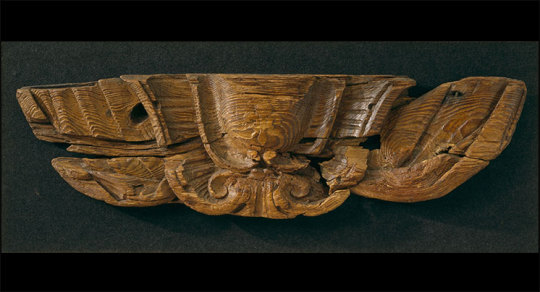
Ecusson arrière de l'Astrolabe ou de la Boussole, fragment du tableau arrière de l'une des frégates, bois sculpté, vers 1785, et retrouvé par Peter Dillon, le 30 septembre 1827 dans le village d'Ammah à Vanikoro.
En 1883, Pallu de La Barrière, gouverneur de la Nouvelle-Calédonie, envoie l’aviso Bruat à Vanikoro. Il a pour mission de recueillir les objets rescapés du naufrage. Le Bruat ne reste que quatre jours à Vanikoro. Le commandant craint pour la santé de son équipage et les insulaires se montrent hostiles en cette époque où sévissent les bateaux de recrutement forcé. Il en rapporte néanmoins ancres, canons, pierrier…
À l’initiative de Pierre Anthonioz, alors commissaire-résident de France aux Nouvelles-Hébrides, le 15 mars 1958, le yacht Don Quijote quitte Port-Vila en direction de Vanikoro. Les autorités françaises ont été prévenues par Reece Discombe, un Néo-Zélandais installé à Port-Vila, lui-même plongeur passionné. Ce dernier a obtenu des informations de la part des employés de la compagnie forestière implantée à Vanikoro. Il participe donc à cette campagne de fouilles. Les recherches s’engagent sur le site de la Fausse Passe. Les méthodes, parfois expéditives, permettent néanmoins de remonter divers objets, métalliques pour la plupart. Le 19 mars, les plongeurs mettent au jour quatre grandes ancres « posées tête-bêche » et en rapportent une au Vanuatu (ex Nouvelles-Hébrides).
Ces découvertes ravivent la mémoire de la Marine. Le capitaine de vaisseau de Brossard, alors commandant de la Marine en Nouvelle-Calédonie, sollicite sa hiérarchie afin que soit envoyé officiellement un bateau français pour continuer de fouiller le site de l’Astrolabe et chercher celui de la Boussole. De Brossard recommande aussi d’envoyer sur place Haroun Tazieff, dont il apprécie les qualités. Le 17 juin 1959, le Tiaré et la Rocinante appareillent de nouveau en direction de l’île. Plus de six tonnes d’objets seront remontées à la surface. Dont des ancres, des canons, des saumons de plomb.
En 1964, averti par Reece Discombe de la découverte de reliques dans une faille du récif-barrière, le ministre des Armées demande qu’une expédition soit organisée sous la houlette du commissaire-résident aux Nouvelles-Hébrides, Maurice Delauney. L’Aquitaine atteint Vanikoro le 6 février. Sur le nouveau site, surnommé la Faille, les Français trouvent des objets qui permettent à Delauney d’ébaucher un scénario crédible du naufrage. Ce site semble bien être celui de la Boussole, mais le doute subsistera encore pendant quelques années. Cette petite mission, qui prend fin le 9 mars 1964, rapporte des éléments nouveaux et essentiels qui encouragent la Marine nationale à lancer d’autres expéditions.
Sous la direction du chef de mission – le capitaine de vaisseau de Brossard –, la Dunkerquoise mouille devant Païou au matin du 20 mars. Les marins remontent une cloche de bord, une poulie et deux pierriers en bronze, ainsi qu’un limbe de quart de cercle. La Dunkerquoise retourne à Vanikoro le 26 novembre pour une mission qui durera un mois. La moisson sera proportionnelle aux importants moyens humains et matériels déployés.
Cependant, à cause des bouleversements géopolitiques que traverse le Pacifique en cette fin de 20e siècle, la continuation des fouilles et la perpétuation du devoir de mémoire seront de nouveau assurées par une association de bénévoles (Association Salomon) jusqu’au retour de la Marine sur le terrain, en 1999, 2003, 2005 et 2008.
#lapérouse#La Pérouse#maritime history#histoire maritime#shipwreck#sailing#expeditions#French history
1 note
·
View note
Text

Combat naval à la hauteur de Louisbourg (Action of 21 July 1781) by Auguste-Louis de Rossel de Cercy.
The Action of 21 July 1781 was a French victory off the coast of Nova Scotia during the American Revolution. It was a frigate action notable both for involving the Hermione (32), famous for bringing Lafayette to America, and for the victorious captains: the comte de Lapérouse (later leader of a well known scientific expedition) and the comte de Latouche-Tréville (later the great rival of Nelson until his untimely death of disease before Trafalgar).
#naval history#age of sail#ships#18th century#american revolution#war of independence#france#britain#amrev#military history
14 notes
·
View notes
Text
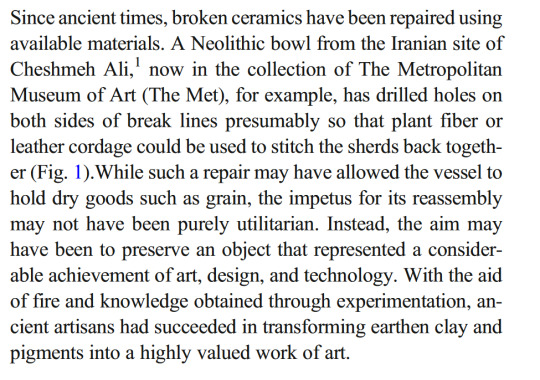
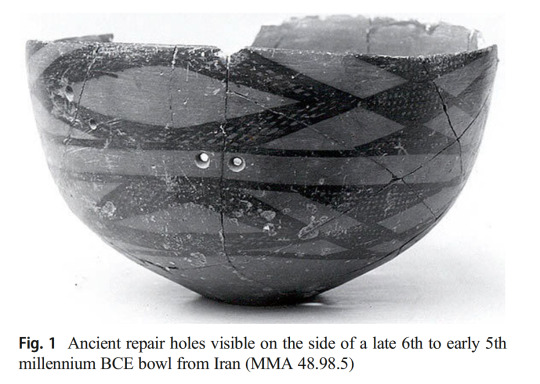
Ceramic musealization: how ceramics are conserved and the implications for research by Jean-François de Lapérouse
46 notes
·
View notes
Text
My 3 Favorite Beaches in Sydney
Wishing you a beautiful and vibrant life! In today’s post, I’m taking you along one of the most beloved activities for Brazilians (and honestly, for anyone who enjoys a good day out): going to the beach and soaking in the beauty of nature.
Even though I’m not the type to play beach volleyball or football like many Brazilians do, I love spending time swimming, sunbathing, and simply being present. I’ve been living in Sydney for less than a year, and one of the biggest gifts has been experiencing summer near some of the most stunning beaches in the south of the city.
Before settling in Sydney, I used to work on cruise ships, which gave me short glimpses of the city. Now, I finally get to dive deeper into its wonders. Australia is world-famous for its beaches—but if you're like me and prefer peaceful, lesser-known spots where you can truly connect with yourself and the ocean, then stick with me as I share my top 3 favorite beaches around Sydney.
🌊 Little Bay
Little Bay is a hidden gem. If you're looking for a quiet place to unwind—away from the crowds of Bondi or Manly—this is your spot. Although it's a bit further from the city center (about 30 minutes by car or longer via public transport), every second spent getting there is absolutely worth it.


This beach consistently ranks as one of the cleanest in Sydney, with clear water and low bacteria levels, according to the NSW Environment website.
Fun fact: the name Little Bay comes from its size compared to nearby Long Bay. It used to be called Yarra Junction, but residents requested a name change because mail kept getting sent to the town of the same name in Melbourne!
Some websites still say there are no facilities here, but that’s outdated info—Little Bay now has toilets and lifeguards. It’s not a surfing or boating beach, which keeps it peaceful. However, rock fishing is quite popular along the surrounding cliffs.
🚨 One thing to keep in mind: there’s usually no phone signal here (at least not with Vodafone… or maybe it’s just my phone! 😄). To get to the beach, you’ll pass through a golf course and take some stairs down—just follow the signs, it’s pretty easy.
☀️ My favorite time to visit? Sunrise. My perfect morning routine is watching the sun come up from the hill near the church, then heading down for a refreshing dip in the ocean.

🌿 Malabar Beach
Malabar is another calm and peaceful beach that's easy to reach. It's around the same distance from the city as Little Bay. Parking can be a little tricky, but since it doesn’t attract the same crowds as Bondi or Manly, you’ll usually find a spot along the street without too much trouble.

Malabar Beach has an interesting maritime past, with the area being named after the MV Malabar, a ship that ran aground nearby in 1931. While it’s now known for its serene atmosphere and beautiful coastal views, the beach was once an important site for maritime activities. The surrounding area also has a rich Aboriginal history, with evidence of the Cadigal people who once lived along the coastline. Over time, Malabar evolved from a remote beach into the peaceful, charming spot we enjoy today, offering a blend of natural beauty and local history.
What makes Malabar extra special for me is the coastal walk from Maroubra to Malabar. It’s shorter and less busy than the famous Coogee–Bondi walk, but the views are just as beautiful—if not more. After a scenic walk, I love cooling off with a swim at Malabar Beach. There’s also a public ocean pool, which is a typical feature on Australian beaches, and totally worth trying!
🌅 La Perouse
If you’re a sunset lover like me, La Perouse is the place to be. It offers the best sunset views in Sydney, in my opinion. 🌇

La Perouse is named after the French explorer Jean-François de Galaup, comte de Lapérouse, who arrived in Botany Bay just days after Captain Arthur Phillip in 1788. The area holds deep historical significance, including stories of hardship and resilience.
A bit of its tough past: when European settlers pushed Aboriginal communities out, La Perouse became one of the few places where they could live. At first, they could fish and sell what they caught, but later restrictions limited them to fishing only for personal use. Isolated from the city, the community endured many challenges. If you're interested in learning more, I recommend checking out this article!
Despite its past, La Perouse is one of my favorite places because it symbolizes transformation. While it's important to acknowledge history, being in nature reminds us that we can create new, beautiful memories. Watching the sunset here—seeing couples taking photos, families smiling, and even pregnant women having maternity shoots—it fills me with hope. It’s a gentle reminder that the future can be brighter, as long as we keep doing our best, together.
Which of these beaches would you love to visit first? Or maybe you already have a favorite beach in Sydney (or elsewhere) that brings you peace? Let me know in the comments or connect with me on Instagram! @hiddenselfblog
With love and sunshine, Ana 🌻
2 notes
·
View notes
Text

Lapérouse, a historic restaurant (1766) an a symbol of Parisian fine dining. Located on the Quai des Grands Augustins in Paris. With its luxurious interior and private dining rooms, it has hosted many writers and artists throughout the centuries, including Victor Hugo and Gustave Flaubert.
#Lapérouse #ParisianFineDining #LuxuriousInterior #PrivateDiningRooms #HistoricRestaurant #QuaiDesGrandsAugustins #VictorHugo #GustaveFlaubert #WriterAndArtists #ElegantDesign #Paris
2 notes
·
View notes
Video
youtube
Les navigateurs disparus
Les navigateurs disparus
Alain Colas,Alexandre Selkirk,Amerigo Vespucci,Bernard Moitessier,Christophe Colomb,Éric Tabarly,Ferdinand Magellan,Florence Arthaud,François Zanella,Henry De Monfreid,Jacques Rogge,Jacques-Yves Le Toumelin,James Cook,Jean-François De Lapérouse,John Byron,Laurent Bourgnon,Martin Frobisher,René Duguay-Trouin, Samuel De Champlain,Sébastien Cabot,Tony Bullimore,Vasco de Gama,Yossi Harel,
2 notes
·
View notes
Text

LADY GAGA DINES OUT IN CELINE S/S24 LOOK
There aren’t many headlines about the upcoming Olympics that don’t include Lady Gaga, and that is because she's expected to throw in a killer performance during the game's opening ceremony tomorrow!
Check out what she wore for her outing to dinner at Lapérouse yesterday.

As someone who takes growing their blazer collection very seriously … this feels like a must-have situation.
Gaga wore the Celine Spring/Summer 2024 classic double-breasted blazer in navy diagonal wool with gold buttons ($3,550).
Mixing denim for summer with business attire is such a huge trend now and I love seeing Gaga wear it so well here. Hopefully she remixes these Celine Spring/Summer 2024 Margaret Triomphe gourmette chain detail jeans somehow with skimpier tops sometime.
Shop:
Celine Classic Blazer ($3,550.00)
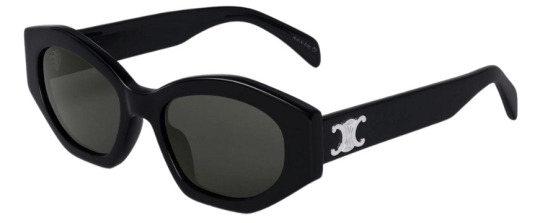
LG already debuted these Celine frames back in October! It‘s the sold-out Spring/Summer 2023 Triomphe 08 geometrical black acetate sunglasses with silver metal logo by the side ($510).
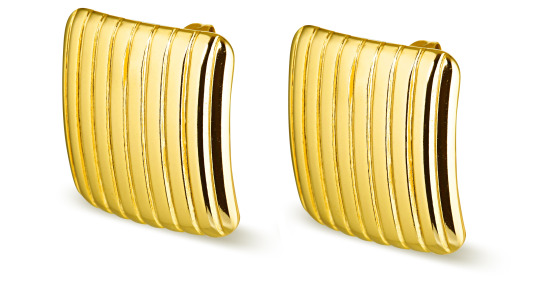
Next, she wore a pair of the vintage-inspired Mara 18k gold-plated ribbed square earrings ($50) by CENDRÉ.
Shop:
CENDRÉ "Mara" Earrings ($50.00)
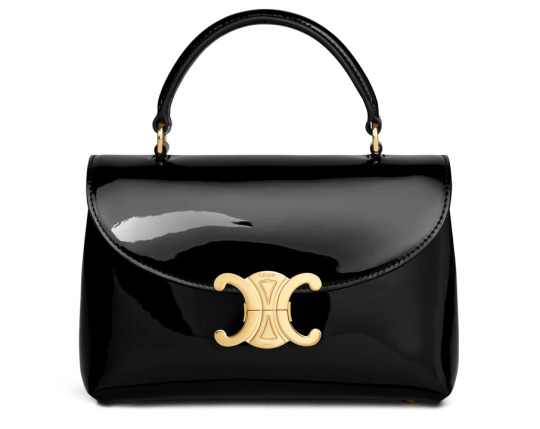
On the styling front, I appreciate the tonal tie-in from her bag to her shoes here.
Gaga finalized her look with the Celine Spring/Summer 2024 Teen Nino patent leather bag with gold Triomphe logo closure ($3,300).
Shop:
Celine "Teen Nino" Bag ($3,300.00)
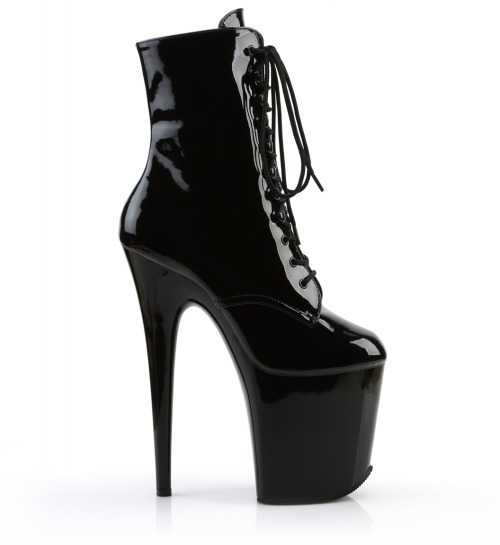
Her fav Pleaser Flamingo-1020 black vinyl platform lace-up ankle boots completed the look.
3 notes
·
View notes
Text
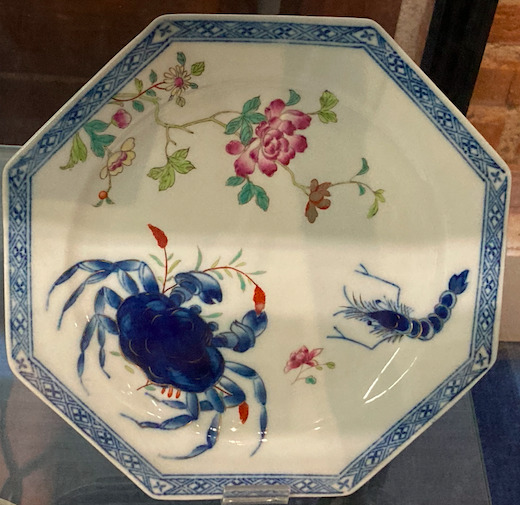
Assiette chinoise "Crabe et Crevette" en porcelaine (Règne de Qianlong, circa 1760) présentée au “Musée Lapérouse” d'Albi , août 2023.
15 notes
·
View notes
Text
So I was listening to Cécile Corbel's New album and ????
????
She made a song about the Lapérouse Expedition and I am legit crying
Will probably have to hide under my desk
2 notes
·
View notes
Text
Last tidbit we had about the Lapérouse expedition was from locals who saw them make raft and waddle into the ocean never to be seen again

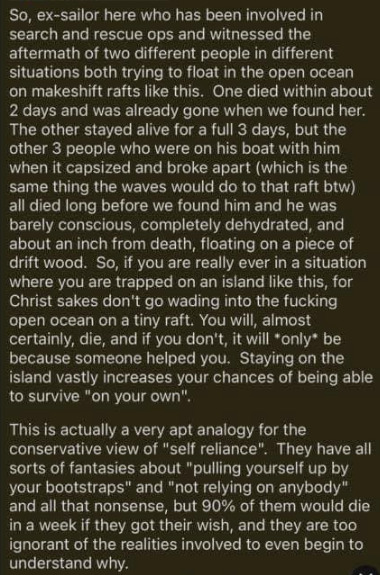
221K notes
·
View notes
Text

Founded in 1766, it is one of Paris' oldest restaurants. Situated on the banks of the Seine, it was originally a townhouse commissioned by King Louis XV’s personal secretary, who intended it as a meeting place for wealthy businessmen.
The restaurant gained fame for its luxurious private dining rooms, known as salons priv��s, where Parisian elites and literary figures would meet in secrecy.
These rooms were fitted with mirrors that women would scratch with diamonds to test whether their jewelry was real—proof of how extravagant and secretive the place was. Lapérouse became a favorite haunt of French writers such as Émile Zola and Victor Hugo.
It’s rumoured to have been the setting for many clandestine affairs, adding to its mystique as a luxurious escape from the public eye. Today, it remains an iconic spot, offering both rich history and Michelin-starred dining.
Thank you FB @Life in Rural France
#parislife#parisian style#paris france#paris#a classical life#classical music#art#18th century#classic#classical history#classical art#classical musician#classical composer#classical#classical instruments#classical academia#modern classical
0 notes
Text




208) Megapodius laperouse; nogal mikronezyjski, Micronesian megapode (megapod mikronezyjski), Micronesian scrubfowl (kurak zaroślowy mikronezyjski) - zagrożony gatunek megapoda, zamieszkujący wyspy zachodniego Oceanu Spokojnego.
Kurczak mikronezyjski (Megapodius laperouse) został nazwany na cześć francuskiego odkrywcy Jean-François de Galaup, hrabiego de Lapérouse.
Ptak ten nadal występuje na Marianach. Wcześniej odnotowano go na wyspach Asuncion, Agrihan, Pagan, Aguijan i Alamagan. Pozostała populacja kilku ptaków może przetrwać na Saipan i Tinian, a wyginął na Rota i Guam. Małe grupy ptaków często odwiedzają zarośla i zarośla niskich wysp peryferyjnych w regionie; jednak gdy występują na większych wyspach, można je również znaleźć w głębi lądu na wyższym terenie. Jego siedliskiem jest gęsty las, a on sam jest wszystkożerny, zjadając dużą różnorodność pokarmu z dna lasu.
Często nieśmiałe i skryte, ale stają się stosunkowo oswojone na zamieszkanych wyspach, gdzie są chronione przed zakłóceniami. Odwiedzają kopce lęgowe kilka razy dziennie. Wiadomo, że ptaki te skradają się w cieniu małych drzew i nie są w stanie latać na duże odległości. Są jednak znakomitymi biegaczami i byłoby je bardzo trudno złapać. Mikronezyjski kurak i niektóre inne megapody to jedyne ptaki, które wysiadują jaja, wykorzystując ciepło wulkaniczne.
W sezonie rozrodczym, zaraz po nadejściu południowo-wschodniego monsunu, samice tworzą duże kopce z gruzu, w których składają jaja. Niektóre pojedyncze samice składają jaja razem w tym samym kopcu. Jednak samice nie korzystają z tego samego kopca więcej niż raz i są zamieniane z innymi samicami. Kiedy jaja wyklują się po jednym do dwóch miesiącach, pisklęta będą żywić się pędami traw i owadami.
Gatunek ten jest obecnie klasyfikowany jako bliski zagrożenia, ponieważ ma bardzo mały zasięg, ograniczony do odizolowanych, niezakłóconych wysepek na morzu. Megapodius laperouse występuje na Palau i Marianach Północnych, a na Guam został wytępiony. Uważa się, że wprowadzenie psów, kotów, świń i szczurów doprowadziło do spadku liczebności tego gatunku na większości wysp. Wraz ze wzrostem drapieżnictwa, podczas japońskiej okupacji wysp Saipan i Tinian, większość roślinności obu wysp została spalona i zastąpiona dużymi farmami trzciny cukrowej. Szacuje się, że pozostało tylko 2000–2500 osobników gatunku. Można go znaleźć w państwie wyspiarskim Palau i niezakłóconych wyspach łańcucha Marianów Północnych, z kilkoma setkami na Sarigan. Podobno niedawno niewielka populacja została ponownie wprowadzona na Saipan. Ptak ten znajduje się w kategorii Czerwonej Listy IUCN z 2010 r. (według oceny BirdLife International — oficjalnej Czerwonej Listy dla ptaków IUCN). Gatunek ten kwalifikuje się jako „zagrożony”, ponieważ ma bardzo mały zasięg, ograniczony do odizolowanych, niezakłóconych wysepek na morzu, z niewielką liczbą ptaków w innych miejscach. Biorąc pod uwagę liczne zagrożenia w całym zasięgu, prawdopodobnie cierpi z powodu ciągłego spadku liczebności. Wydaje się, że jedynym sposobem na zapewnienie bezpieczeństwa gatunkowi jest ochrona kilku małych wysp i wypuszczenie tam niewielkiej populacji megapodów. W ten sposób zapewniona zostanie bezpieczna populacja. Na większych i wyższych wyspach wzrost liczby ludzi i wprowadzonych szkodników prędzej czy później zniszczy wszelkie populacje megapodów.
0 notes
Link
In 1785, Napoleon Bonaparte applied to serve as a crew member on one of the ships. He was a 16-year-old from Corsica, fresh out of the École Militaire in Paris, and although short-listed he was not selected to join the expedition. One could say that the world would have been a very different place had he been welcomed aboard and perished with the other crew members.
0 notes
Text
0 notes
Note
❛ i know, alright, i know i'm an asshole. but i'm trying here. ❜ + crowley, for aziraphale !!
The restaurant is small and much too crowded. Waitstaff and patrons alike shout at each other rather than talk, and the walls are covered in inexplicably irremovable grime. It is the sort of place no one would wait too long to be seated at, nor wish to remain seated for very long – no matter how splendid the risotto.
All of this, the Angel supposes, made it understandable to cause their baby to wail so loudly that the couple ahead of them thought better of it and left to dine at home (and to bring a baby to such a place, to begin with? rather discourteous to the baby). Or for a waiter who otherwise perfectly identified tables and made excellent tips to mistake table thirteen for theirs and leave them the focaccia before they even ordered it. That, he would even say, was a kindness, since the edge was a tad burnt.
And, he supposes, makes it justifiable for him to not oppose any of it. Only to stare (somewhat) disapprovingly, huff, and sigh when cued.
“One is as one does” the Angel states. It is not reproachful, it is a matter of fact. Devlish nature be damned, Crowley was trying. Frankly, Crowley could’ve done much worse. He had, in fact, in Lapérouse. And he would always be ever so sorry for the Michelin star it had cost them.

“You cannot help it any more than I can help tipping generously” he adds, a pinch more pep to his tone. And he would! He would make a sure point of it now.
1 note
·
View note